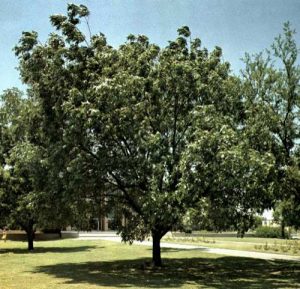We at ProLawnCo are excited to bring to you the newest addition to our website, the Tree of the Month. Thank You for spending time with us and we hope you find the information useful. It just seems appropriate to make our inaugural Tree of the Month the State tree of Texas, the Pecan. For any native Texan, this is a tree that should take one back to fond memories escaping from the Texas summer heat under the canopy of these beautiful trees, perhaps for a picnic or just a great nap. Of course we could not discuss the Pecan tree without mentioning its greatest gift and sweetest memory, Pecan Pie!
PECAN
Tree Info
Most preferred conditions
Pecan trees are native to nearly all parts of Texas and there are numerous varieties available that do well in several different types of soil. There are varieties found that do well even in the heavy black clay soils we have in the Frisco and McKinney area. Pecan trees have a unique ability to adapt to our Texas climate because they can tolerate stress very well. Pecan trees are drought tolerant and naturally manage stress by shedding pecans.
Considerations – which one for you?
With so many varieties to consider, it can be difficult to choose which Pecan may be right for you. For areas such as Frisco, McKinney, Little Elm, Prosper, Celina and surrounding communities, a Native variety such as the Caddo would be a fantastic choice. The Caddo Pecan is an excellent choice for a great shade tree because of strong limbs, high nut yield and scab resistance. The pecans are small, but have very high quality kernels and will bear in 5-6 years.
As with any tree, there are spacing, water and fertilization factors to consider. At ProLawnCo, we are eager to help you through these steps and find you the perfect pecan to shade you through the summer!
